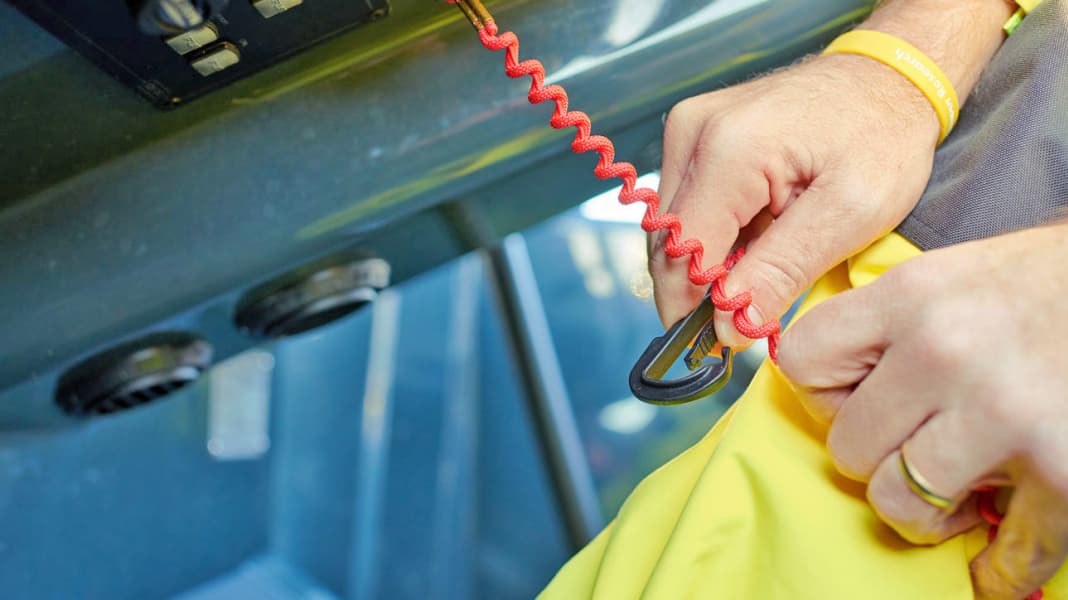
This article is part of the special season start. All parts:
- Cast off - how to get the new season off to a smooth start
- Checklist: Fit for the new season - the checklist
- Cleaning, polishing and care
- The best care and cleaning products for boats
- Last-minute tips from the experts at Pantaenius for the start of spring
- Checklist for the boat trailer
- The best tips from the Pantaenius specialist
- Changing the oil in a boat engine - here's how!
- Special pumps - changing oil in no time at all
- To check the cooling circuit
- How to renew the antifouling
- Boat equipment - the more, the better
The basic safety requirements for the design of recreational craft are set out in the EU Directive 2003/44/EC before. In contrast, there are no regulations for safety equipment in this country, only recommendations based on the four directive categories A (formerly "high seas") to D (formerly "sheltered waters") and the corresponding areas of use. The following are suggested:
- For categories A, B, C and D: Approved position lighting, the flags "N" and "C" as simple visual distress signals, as well as a red flag inside (mandatory), shut-off valves for fuel tanks, anchor (which must always be easily accessible and ready for use), tools, outboard ladder, first aid kit, ABC powder extinguisher and fire blanket, smoke detector, hand lamp, fog horn, hand bilge pump, bailer, towline, boat hook, throwing line, binoculars, depth sounder, life jackets, life belt, smoke signal (orange).
- Additionally only for categories A, B and C: Sea railing, spare anchor, leak sealing material, radar reflector, bilge pump, magnetic and bearing compass, log, GPS, navigation equipment, chart plotter with up-to-date software, classic paper charts and nautical manuals for the area, safety harnesses, parachute rockets, hand flares
- Additionally only for categories A and B: Drift anchor, sound signalling system, bell, VHF radiotelephone system with GMDSS and a sufficiently dimensioned life raft
- Finally, additionally only for category A: a sextant for navigation and a distress beacon (EPIRB).
This equipment should be on board
However, many of the items of equipment that are only suggested for the "higher" categories have long been found on other boats. This applies, for example, to Electronic navigation equipment and VHF radio.
However, even this list of suggestions does not mention some items of equipment - perhaps because their presence is not only good seamanship, but also common sense. These include Lines of sufficient lengthThe fenders should be of the right size, number and condition, for mooring or other purposes.
If you do not have sufficient railing, you should at least use a non-slip deck covering and ensure that the handrails or handles are easy to reach and solid. The foredeck must be safely accessible at all times, especially for manoeuvres on both small and larger boats; the width and condition of the side deck are the decisive criteria here.
Also helpful: a dinghythat is at least equipped with oars. It is by no means only full-grown dinghies in their own davits that count - even a small inflatable boat can be a good choice. the decisive difference make. And a model with an air floor can also be set up quickly and easily on board.
Outboard motor are not only an issue in connection with dinghies; as auxiliary motors they can also keep larger cabin cruisers manoeuvrable if the main drive fails. Yachts that are designed for long journeys, such as trawlers, are often even equipped with an additional permanently installed engine for this purpose. get-home-system equipped.
Speaking of outboards: the Quickstop leash is part of the safety equipment. It should be mandatory - attached to the arm or leg - even on short trips, regardless of whether the boat only has tiller steering or a proper steering position with fixed seats, and regardless of whether you are travelling alone or with several people.
This article is part of the special season start. All parts:
- Cast off - how to get the new season off to a smooth start
- Checklist: Fit for the new season - the checklist
- Cleaning, polishing and care
- The best care and cleaning products for boats
- Last-minute tips from the experts at Pantaenius for the start of spring
- Checklist for the boat trailer
- The best tips from the Pantaenius specialist
- Changing the oil in a boat engine - here's how!
- Special pumps - changing oil in no time at all
- To check the cooling circuit
- How to renew the antifouling
- Boat equipment - the more, the better

